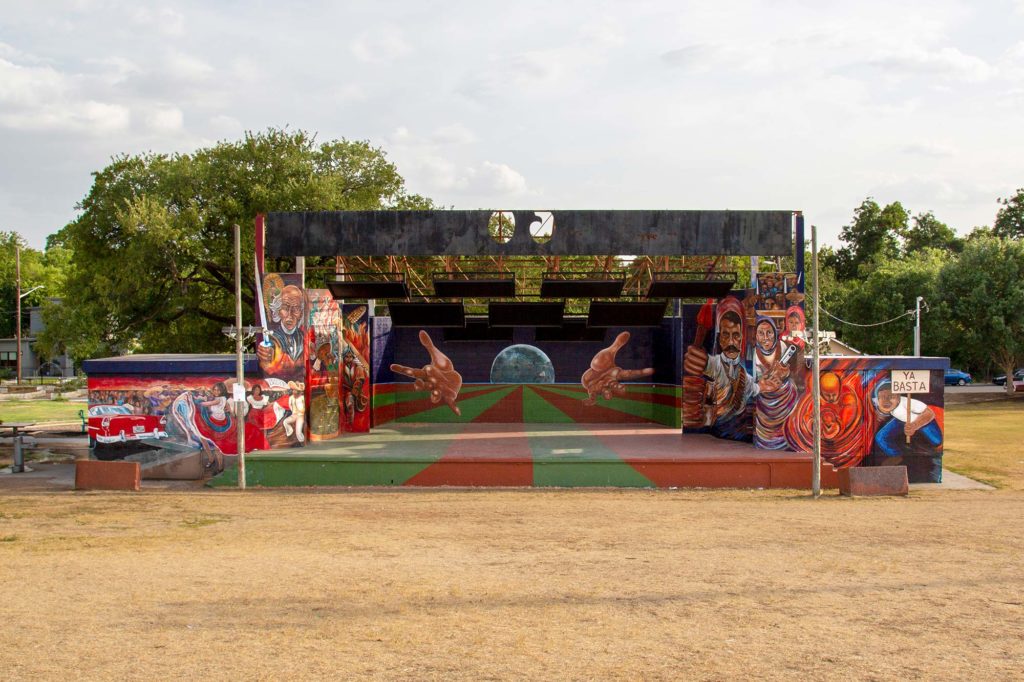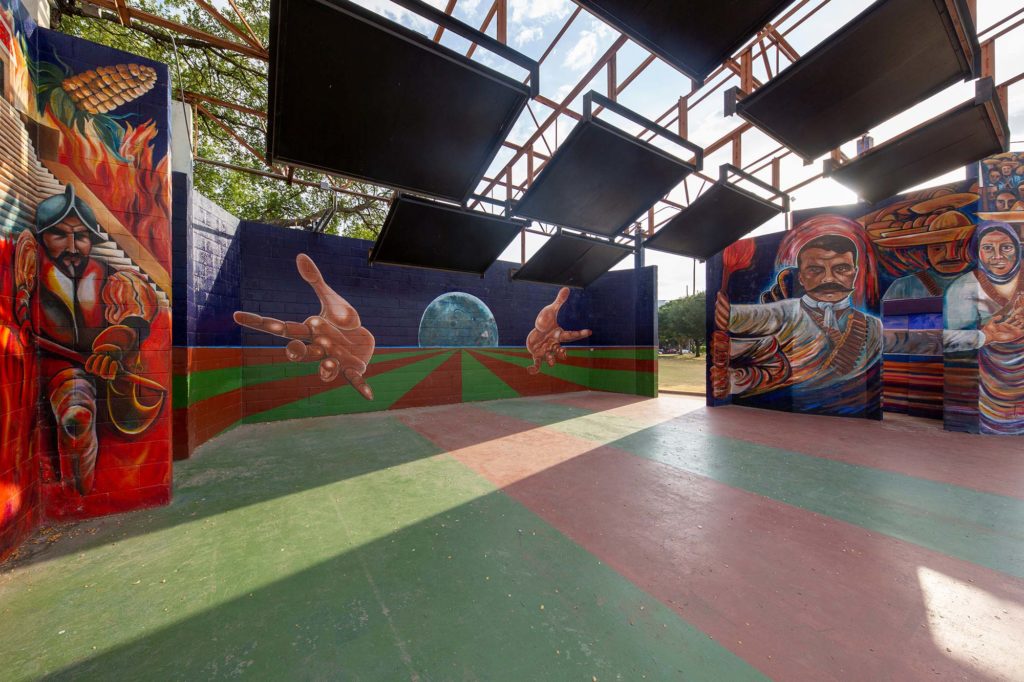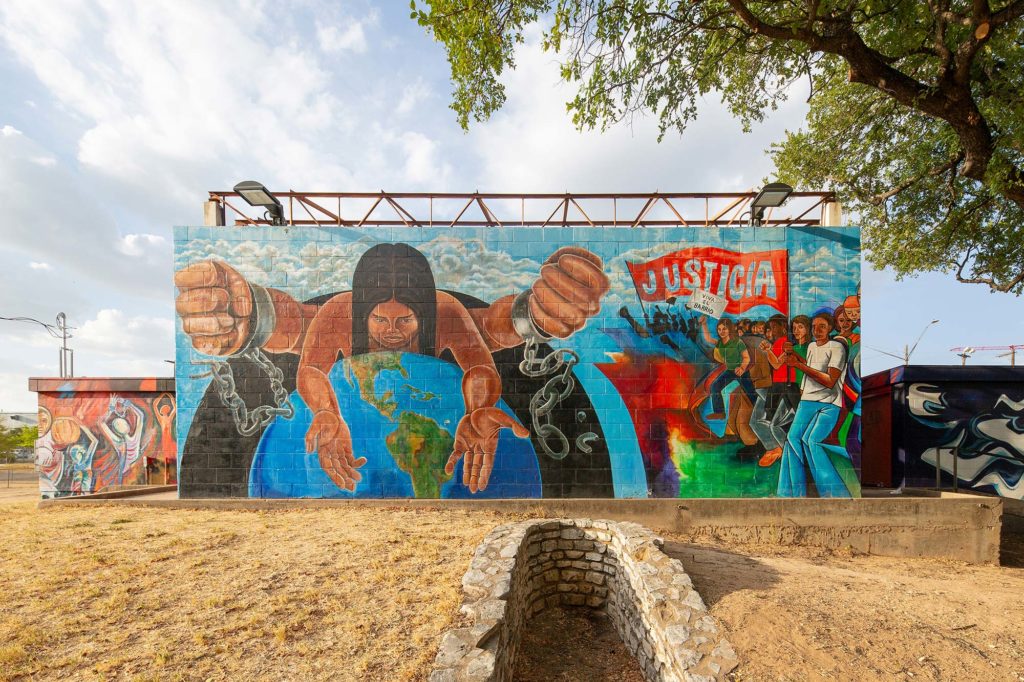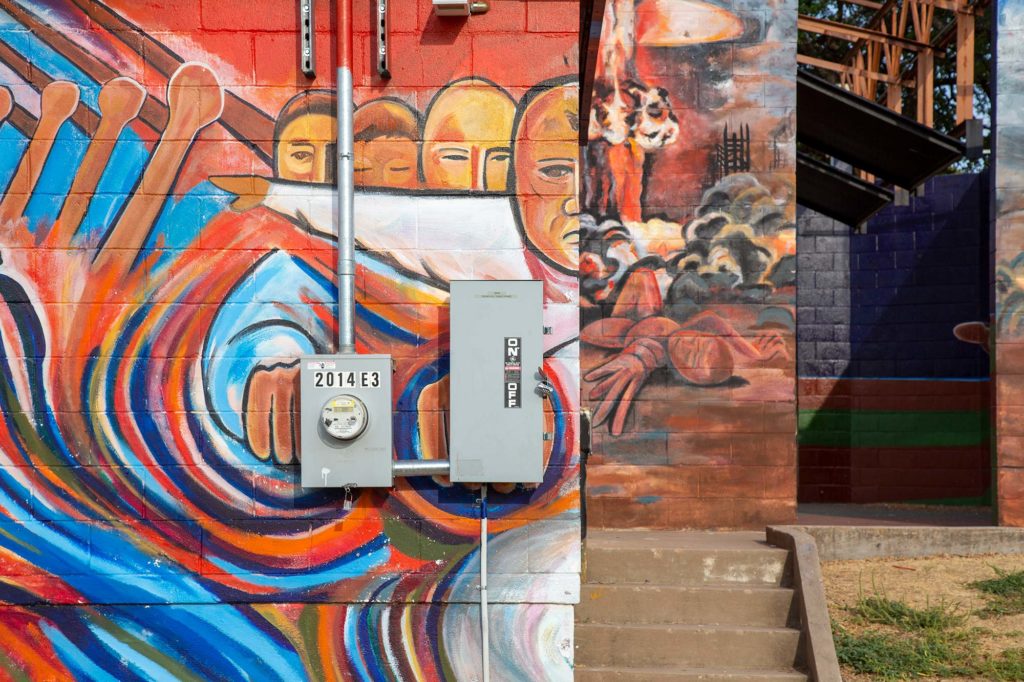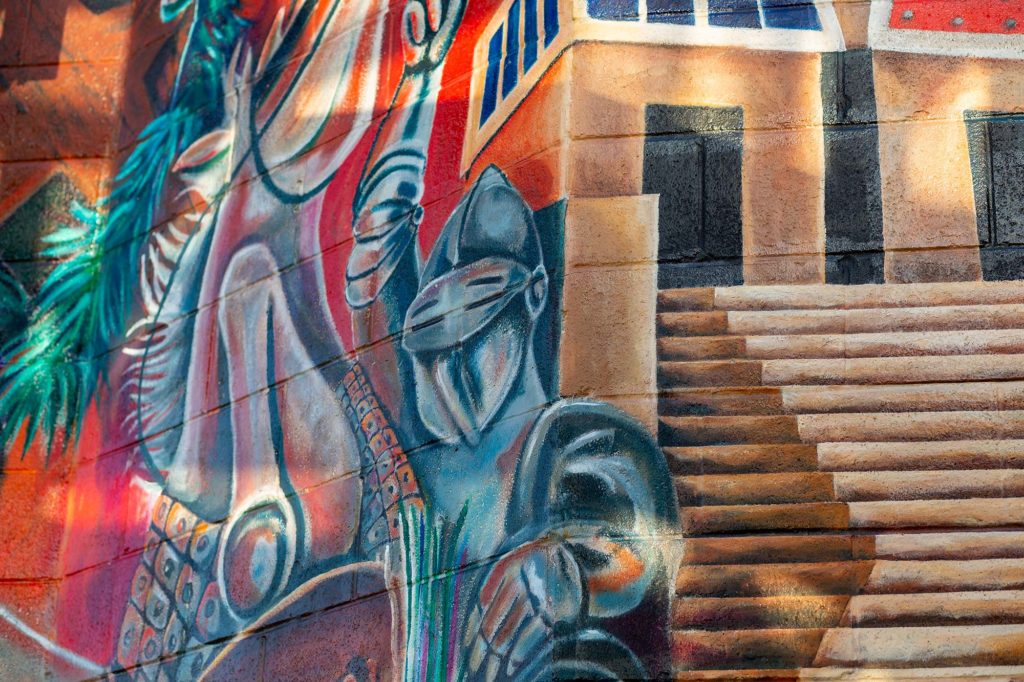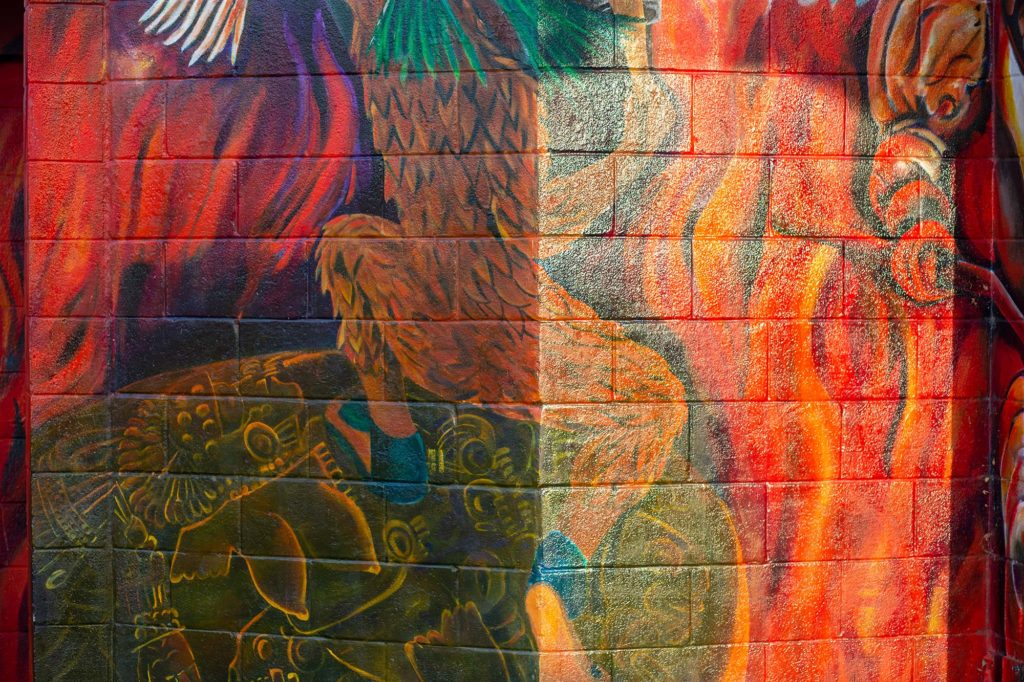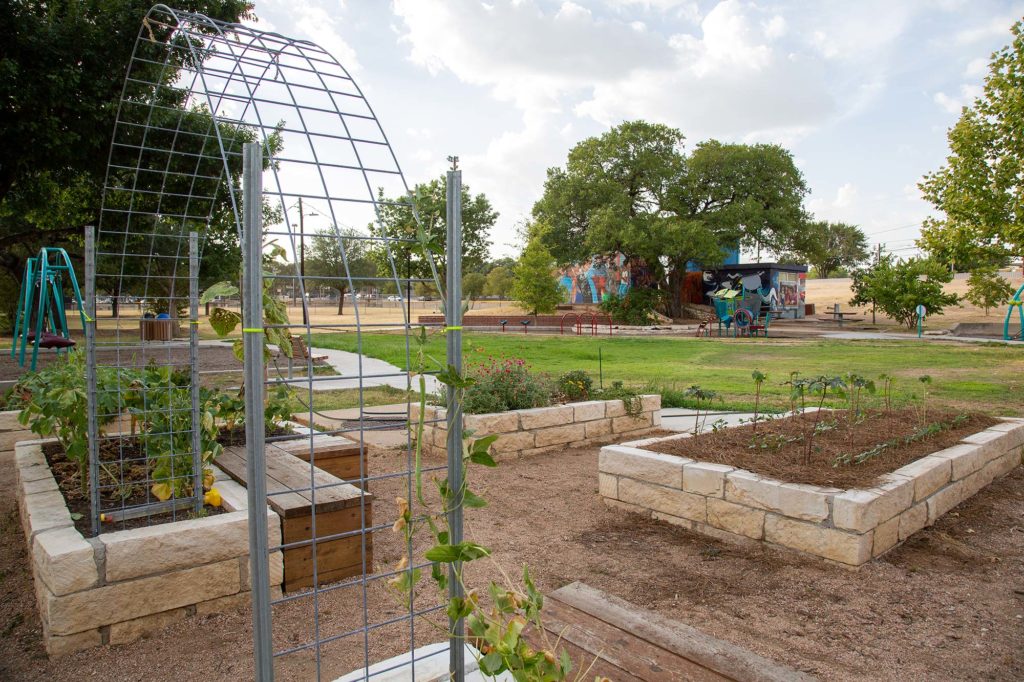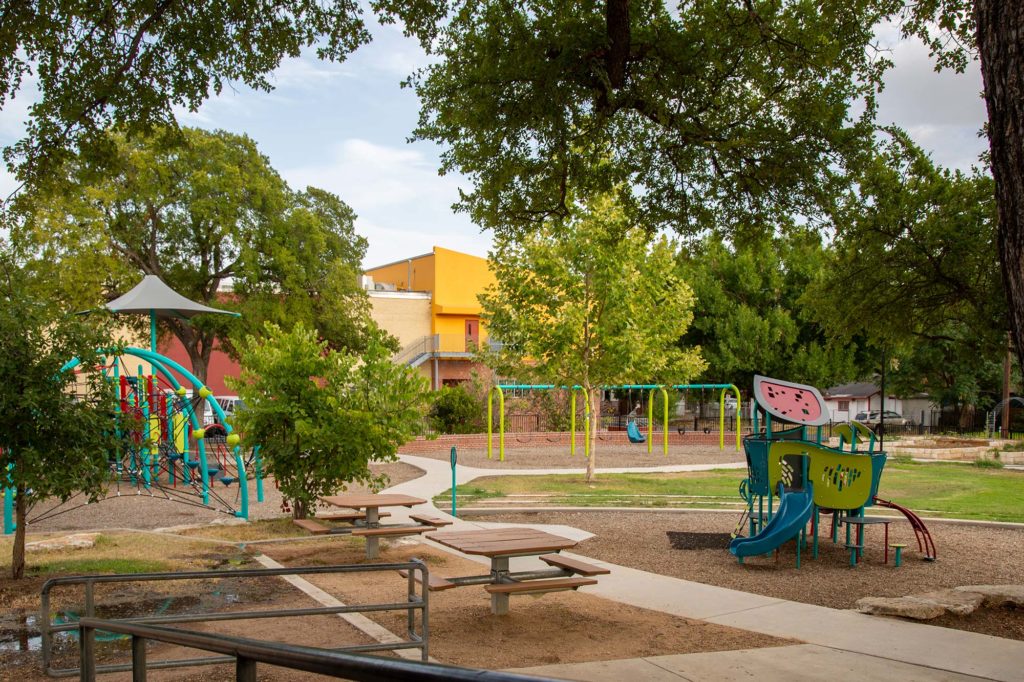The sense of community and neighborhood heritage is strongly felt within the Pan American Neighborhood Park. Whether it’s the vivid murals from Chicano artist Raul Valdez on the Hillside Amphitheater or the various community programs in the Oswaldo A.B. Cantu/Pan American Recreation Center, this place—tucked between the remnants of a historically Latino community—evokes curiosity.
Today’s park owes its heritage to the first Latin American Community Center in Austin. Located about two blocks away from the current site, the center served as a pillar of the East Austin community under the direction of the National Youth Association (NYA) until 1946, when the City of Austin Parks and Recreation Department took over the property. It wasn’t until 1956 that the center moved to its present location, and the adjacent park was developed in response to community engagement. In 1996, the recreation center was renamed after a former boxing coach and community pillar, Oswaldo A.B. Cantu.
The colorful Hillside Amphitheater was added in 1958, becoming what is now an iconic and artistically riveting space upon which local muralist Raul Valdez depicted the experience of Mexican-Americans—from migrant families and political activists to themes of birth, life, and death. Here, the worlds of music and design coalesce every summer during the Hillside Summer Concert Series, Austin’s longest-running outdoor music program. The artist restored his murals in 2012, and in 2019 the Austin Parks Foundation oversaw the renovation of the playground with new equipment, more seating, and stronger connections to the neighborhood.
Despite the many changes witnessed by the Pan American Neighborhood Park throughout the years, one thing is certain to stay: the rich and vibrant essence of a culture and community that made the park what it is today. – Francisco Rosales
